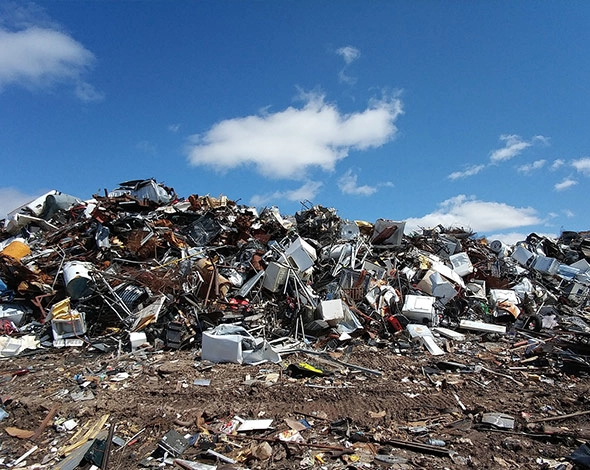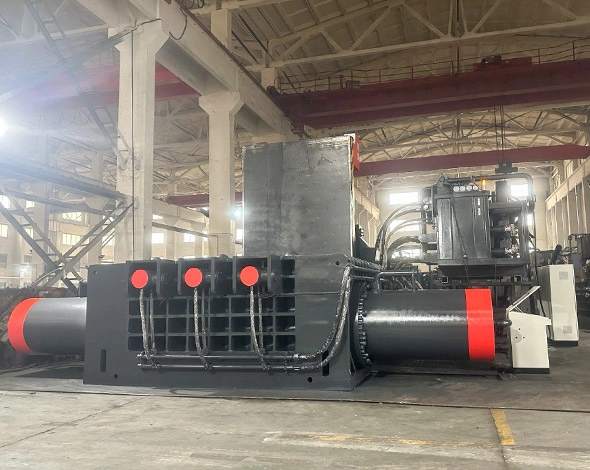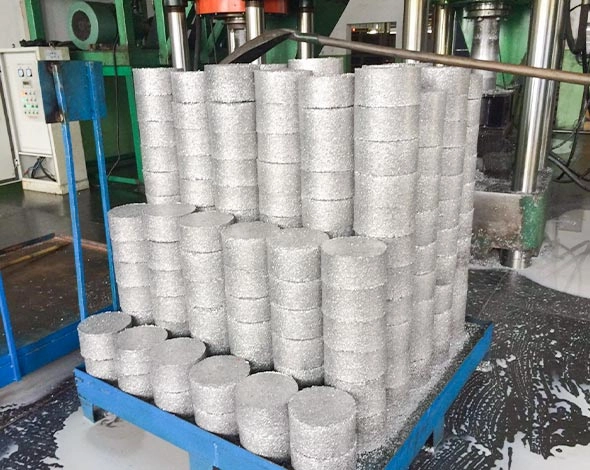Scrap metal balers are essential for recycling and waste management, helping businesses compact scrap metal into manageable bales for easier handling, transportation, and storage. Choosing the new or used baler is crucial for operational efficiency and can significantly impact a business’s bottom line.
This article will explore the advantages and considerations of both new and used scrap metal balers, providing insights to help businesses make informed purchasing decisions that align with their operational needs and budget constraints.

Advantages of New Scrap Metal Balers
Investing in a new scrap metal baler has several notable advantages, ensuring businesses benefit from the latest technological advancements and efficiency.
Here are some key benefits:
- Reliability and Performance: New balers incorporate the latest technology, ensuring more efficient operations with a lower risk of breakdowns. This reliability can significantly reduce downtime in processing scrap metal.
- Warranty and Support: Purchasing new equipment often includes comprehensive manufacturer warranties and access to dedicated support. This support can consist of maintenance services, which help minimize operational disruptions.
- Advanced Features: New models will likely have enhanced features, such as improved energy efficiency, better safety protocols, and advanced automation capabilities. These features not only streamline operations but also improve workplace safety and can lead to cost savings in energy consumption.
Choosing a new baler can be a significant upfront investment but offers long-term benefits in terms of operational efficiency and maintenance costs.
Benefits of Used Scrap Metal Balers
Opting for a used scrap metal baler can provide substantial benefits, particularly for businesses looking to maximize budget efficiency.
Here are the main advantages:
- Cost Savings: Purchasing a used baler can be significantly less expensive than buying a new one, offering immediate cost savings, which can be crucial for budget-conscious businesses.
- Immediate Availability: Used balers are often available for immediate purchase and installation, bypassing the potential lead times associated with ordering new equipment.
- Lower Depreciation: Used equipment typically depreciates slower than new equipment. This slower depreciation can be advantageous if the baler needs to be resold.
- Proven Performance: A used baler’s track record can be assessed before purchase, providing insights into its reliability and operational efficiency based on its service history.
These benefits make used balers a viable option for many businesses, balancing cost with functionality.
Considerations When Choosing Between Used and New
When deciding between purchasing a new or used scrap metal baler, there are several factors to consider to ensure that the choice aligns with your business’s operational requirements and financial constraints:
- Operational Needs: Assess the expected usage intensity and required reliability. New balers may offer more advanced features and reliability for high-volume operations.
- Budget Constraints: Evaluate your budget. While new balers are more costly upfront, used balers can offer significant savings but might come with hidden maintenance costs.
- Longevity and Maintenance: Consider long-term use and potential maintenance issues. New balers typically come with warranties and require fewer immediate repairs, whereas used balers might require more frequent maintenance.
- Technology and Efficiency: New models may have better technology, offering greater efficiency and lower operating costs. Determine if the technology upgrade justifies the higher initial investment.
- Resale Value and Depreciation: New equipment depreciates faster, which is essential if you upgrade equipment frequently. Used equipment might have a slower depreciation curve, making it a better option if you plan to resell it.
Businesses can make well-informed decisions that best suit their operational needs and financial capabilities by carefully assessing these aspects.
Case Studies
To effectively illustrate the practical implications of choosing between new and used scrap metal balers, we can examine several case studies:
- Small Manufacturing Firm: Due to budget constraints, a small business opted for a used baler and reported significant cost savings and adequate performance for its low-volume needs.
- Large Recycling Plant: This facility invested in a new, high-capacity baler to handle substantial daily throughput. The decision was driven by the need for reliability and the latest technology to maximize efficiency and minimize downtime.
- Mid-sized Scrap Yard: After initially struggling with a used baler’s frequent maintenance issues, the company switched to a new model, which improved its operational efficiency and reduced long-term repair costs.
These examples highlight how different business sizes and operational scales influence the decision-making process when investing in scrap metal balers, showcasing each option’s tangible benefits and challenges.
Conclusion
Choosing between a new and used scrap metal baler hinges on several critical factors, including budget constraints, operational needs, and long-term investment considerations. While new balers offer reliability, advanced technology, and warranty support, used balers appeal for their cost-effectiveness and immediate availability.
Through careful evaluation of these factors and learning from relevant case studies, businesses can make an informed decision that balances financial efficiency with operational efficacy, ensuring they select the suitable baler to meet their specific requirements.



